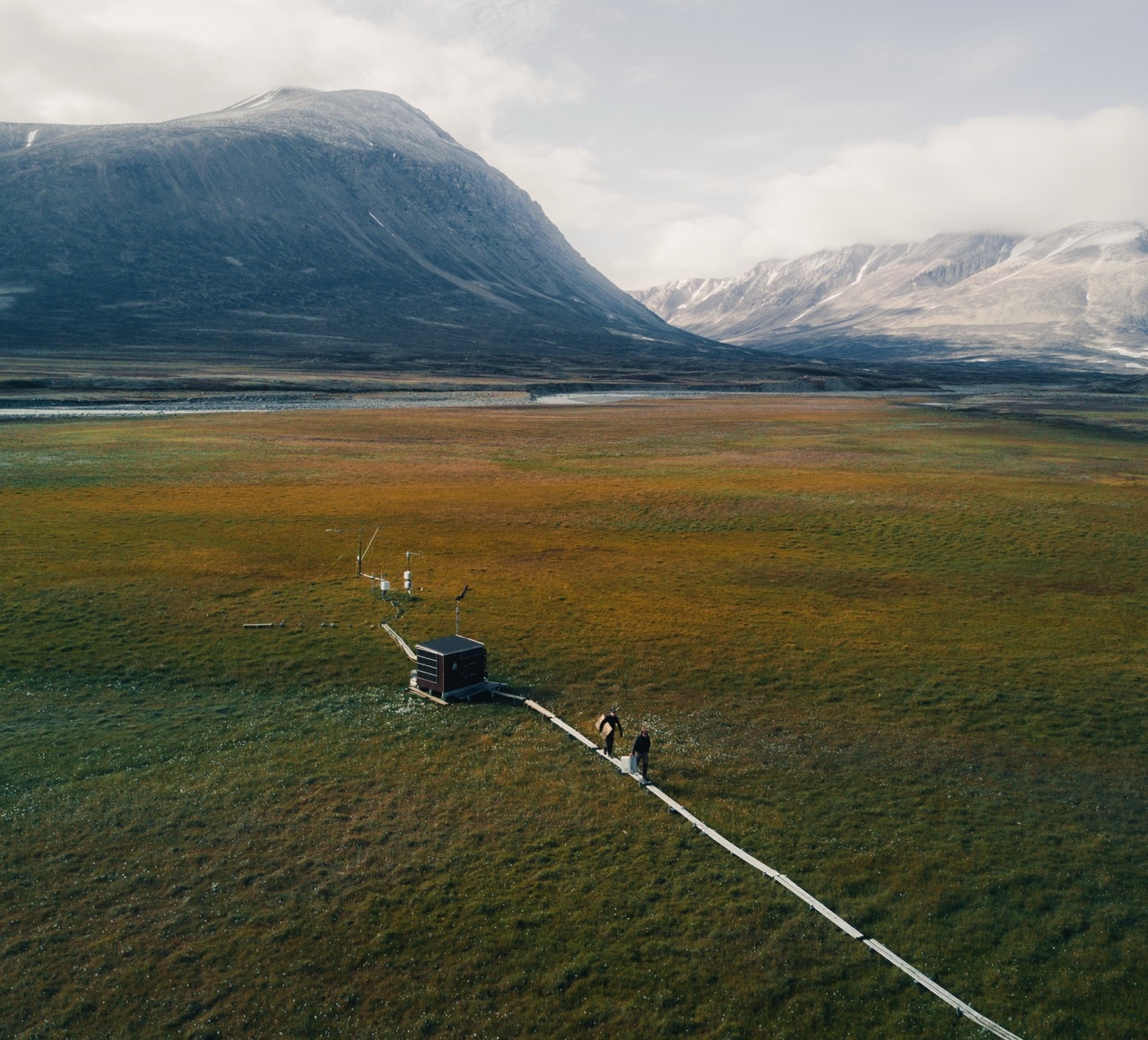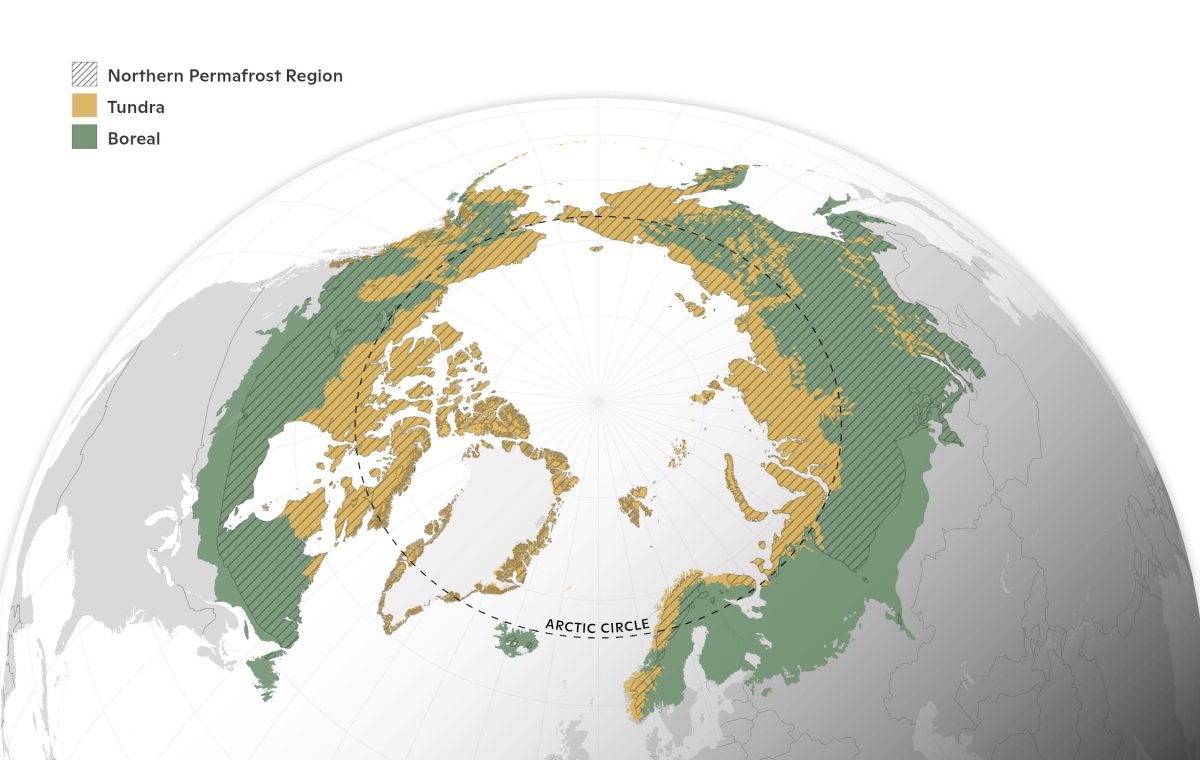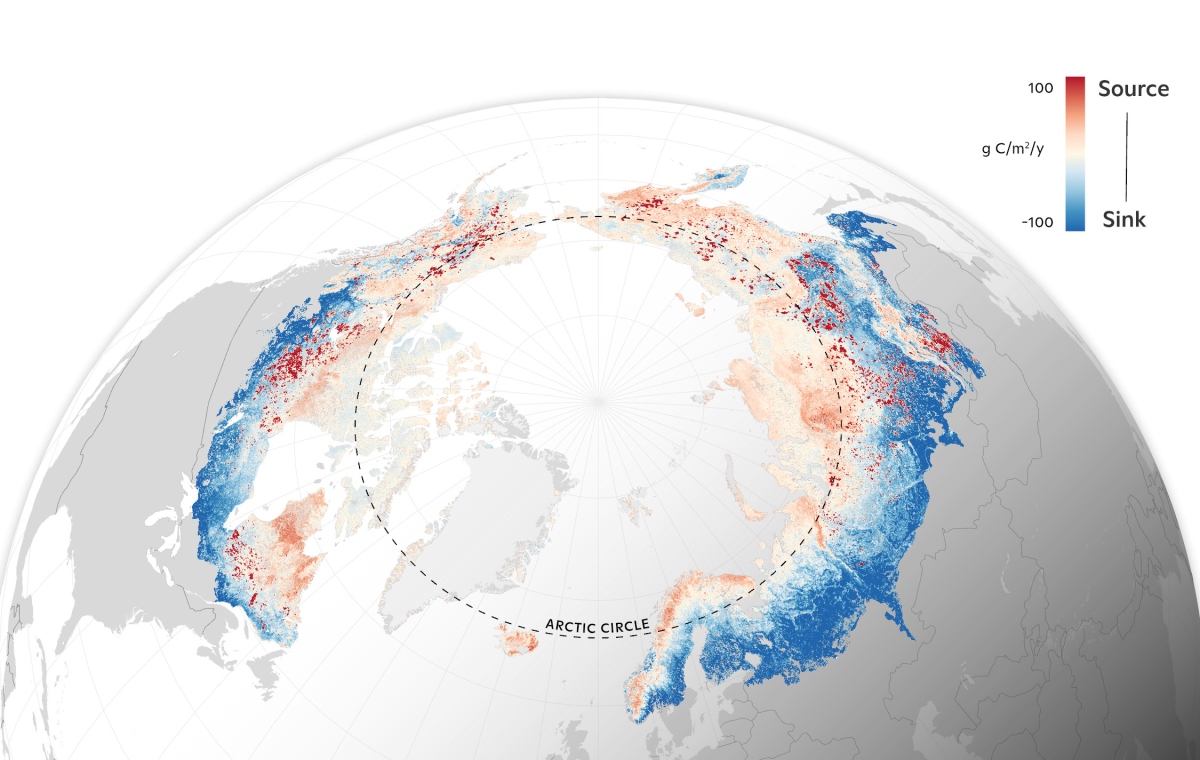
A study, published earlier this year in Nature, found that a third (34 %) of the Arctic-boreal zone is now a source of carbon to the atmosphere. That balance sheet is made up of carbon dioxide (CO₂) uptake from plant photosynthesis and CO₂ released to the atmosphere through microbial and plant respiration. When emissions from fire were added, the percentage grew to 40%.
“We wanted to develop the most current and comprehensive picture of carbon in the north, and to do that, we knew we needed to account for fire’s growing carbon footprint in this region,” says Dr Anna Virkkala the lead author of the study and a research scientist at Woodwell Climate. “While we found many northern ecosystems are still acting as carbon dioxide sinks, source regions and fires are now cancelling out much of that net uptake and reversing long-standing trends.”
The increased carbon emissions result from forest fires, permafrost thaw, and increased microbial activity due to the longer growing seasons, all increased and accelerated by the warming climate.
The study is based on data from over 200 locations around the arctic and boreal areas, and encompasses data from 1990-2020, over three decades. Data from a dozen of ICOS stations in Finland, Sweden and Greenland were included. In addition to Anna Virkkala, the co-author team included several ICOS scientists, particularly from the stations involved.

“The data from ICOS stations was crucial for this study,” Anna Virkkala says. “ICOS data is of high quality, in standard format across the countries and locations, and has decades long time-series. In fact, some of the ICOS sites have the longest record of measurements across the Arctic-boreal zone. ICOS sites provide year-round data, including the critical non-growing season – a period unmeasured at many other Arctic-boreal sites – when emissions can be substantial. ICOS stations also capture several types of ecosystems covering boreal forests and wetlands, permafrost wetlands as well as tundra ecosystems, making it possible to understand carbon flux variability comprehensively.”

The data produced by the network of ICOS stations and infrastructure is empowering scientists to reach their results much faster than before, as they can use the data and tools that are openly available in the ICOS Carbon Portal. While the analysis of the data is a demanding and time-consuming phase and can take months or a few years, it is still a significant improvement compared to times even as recent as early 2010, when collecting and compiling data and achieving research results could take a decade or more.
Read the full article Virkkala, AM., Rogers, B.M., Watts, J.D. et al. Wildfires offset the increasing but spatially heterogeneous Arctic–boreal CO2 uptake. Nat. Clim. Chang. 15, 188–195 (2025). https://doi.org/10.1038/s41558-024-02234-5